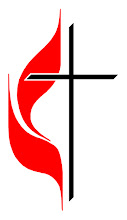As we follow the rhythms of the Church season, we look for clues to tell us what is happening. Beginning in Advent, we were paying attention to light. The Gospel told us “The Light shined in the darkness” (John 1:5), and we lit our advent candles each week to remind us that the “darkness has not overcome it.” The Shepherds see the bright light of the star as do the Magi who follow it and the star’s bright light leads us into the Epiphany season.
But beginning this week, the light begins to change. February 2nd is traditionally celebrated in the Church as the Feast of the Presentation of Jesus in the Temple. Faithful to the rites of their Jewish faith, Mary and Joseph bring Jesus to the Temple to dedicate him (Luke 2: 25-39). Simeon and Anna who had been waiting their whole lives to see the Messiah, recognize Jesus as the One for whom they have been waiting and the light blazes for all the world to see.
Our Epiphany lessons focus on Jesus’ ministry- the healings, feedings, teaching that will lead him to the cross where, on Good Friday, the light will briefly go out to be rekindled in the resurrection fire on Easter Eve. The Feast of the Presentation is the middle point in the Church year between the light of the Advent candles and the re-kindling of the Paschal Candle. It is a hinge point in our journey.
Grace and peace,
Dr. Elizabeth


